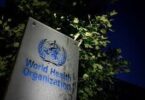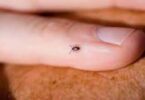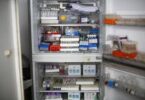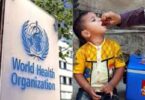F.P. Report
LAHORE: Breast cancer is one of the most common diseases among women and death rates caused by it around the globe are still higher owing to late detection and lack of awareness.
Several studies have revealed that when breast cancer is detected at its earliest stage, the survival rate becomes more than 90 per cent.
Therefore, in order to create awareness about the disease, the World Health Organization (WHO) has marked October as the ‘Breast Cancer Awareness Month’ to help people understand the importance of early diagnosis of the disease for saving millions of lives.
Aiming at providing awareness to women about the disease, government, various medical forums and non-governmental organizations (NGOs) had organized various seminars and awareness walks on ‘Breast Cancer Awareness’ during the month-long mass sensitization campaign.
Oncologists and health experts, during this month, made special efforts to ensure early detection of breast cancer and spread awareness for eliminating the stigma about the disease.
Every year, around one million women are diagnosed with breast cancer globally. Breast cancer is the most common cancer among females, and the GLOBOCAN report of WHO revealed that there were over 1.38 million women with breast cancer in 2018. However, it was sad to note that the number had reached 2.3 million in 2020, and 685,000 deaths were caused due to it across the globe.
Likewise, collectively during the past five years, at the end of 2020, there were 7.8 million women alive who were diagnosed with breast cancer, making it the world’s most prevalent cancer figure, the report added.
Breast cancer mortality was witnessed with a slight variation, by changing little from the 1930s through to the 1970s. Luckily, improvement in survival of the patients was witnessed in the 1980s, in countries with early detection programs, combined with different modes of treatment to eradicate the disease.
Noted Oncologist, Dr Amina Khan told APP that cancer is a family of disease and breast cancer is one of them. Breast tissues are made up of milk producing glands, which are called lobules, and the ducts, which connect the lobules to the nipple, she added.
She said that the remaining part of the breast is composed of lymphatic, connective and fatty tissues. Breast cancer is the most prevalent type of cancer reaching at alarming levels in the world. Throughout the world, breast cancer poses a major health risk for women, she added.
Pakistan, being a developing country, is most thickly populated and the major population is living in remote rural areas. Therefore, in under-developed rural areas, no formal health infrastructure is available as illiteracy is a major cause to diagnose breast cancer. Mostly village folk women have no awareness about personal hygienic conditions, she said.
There are certain methods that can be used to reduce the breast cancer rate, she said, adding that women can reduce the risk of breast cancer by four per cent by breastfeeding their minors for at least 12 months.
Exercise should be focused, which includes walking 6,000 steps a day, consuming vegetables, fruits, avoiding processed meat, regular use of calcium and vitamin D can protect women against breast cancer, she added.
In rural areas, socioeconomic conditions are responsible for poor health of women. To a query, Khan said rural women were becoming more vulnerable to breast cancers every year because it was an inherited disease, which is transmitted from mother to daughter.
The major reason of the increasing number of the disease among women is unavailability of screening centres to diagnose various types of cancer, and every year a large number of women die due to breast cancer and Hepatitis-C.
Dr M Zulqarnain Chaudhry, consultant breast surgeon at Shaukat Khanum Memorial Cancer Hospital and Research Centre (SKMCH&RC) said that breast cancer was the most common disease among women worldwide while Pakistan has the highest incidence of the disease in Asia.
One out of nine Pakistani women suffers breast cancer at some stage of her life while thousands of lives are lost to the disease every year, he added.
“One of the major barriers to early diagnosis is lack of awareness and women’s shyness in discussing their health issues and going for any kind of breast examination,” said Dr. Zulqarnain Chaudhry.
Women below 40 years can perform regular self-examinations while women above 40 years should undergo regular mammography screening, he emphasized.
The best way to fight the disease is to perform self-examination on a monthly basis and look for any sign or symptom, so that treatment could begin immediately, he added.
About symptoms of breast cancer, he said it could be swelling of all, or part of the breast, dimpling or skin irritation, nipple redness, breast pain, turning of the nipple inward, or thickening of the nipple.
Likewise, a nipple discharge (other than breast milk), thickening of the breast skin, or a lump in the underarm area, could be the symptoms of breast cancer, he added.
The risk factors, he said, included getting older, delayed marriage, reproductive or family history, genetic mutations of breast or ovarian cancer, personal history of breast cancer or certain non-cancerous breast diseases, use of hormonal drugs and previous treatment using radiation therapy.
Dr Nauman, breast psychologist at Mayo Hospital, Lahore said, “We emphasize women to change their lifestyle as today we have a sedentary lifestyle, while eating a processed, frozen products and lot of junk food. “People need to have a healthy diet and lifestyle, which would help protect the body,” added Dr Nauman. (APP)






